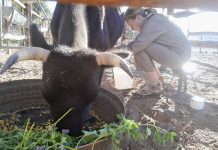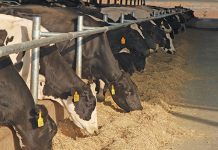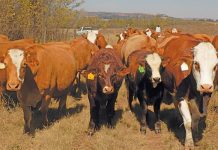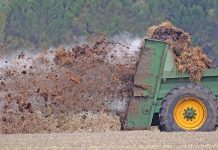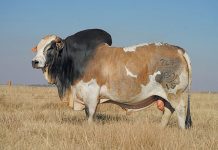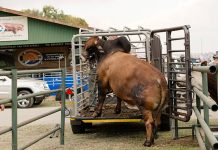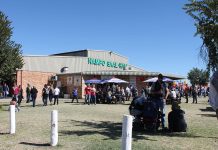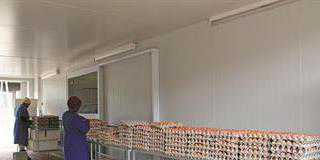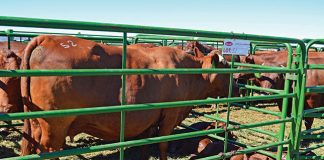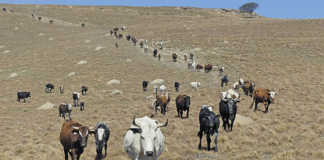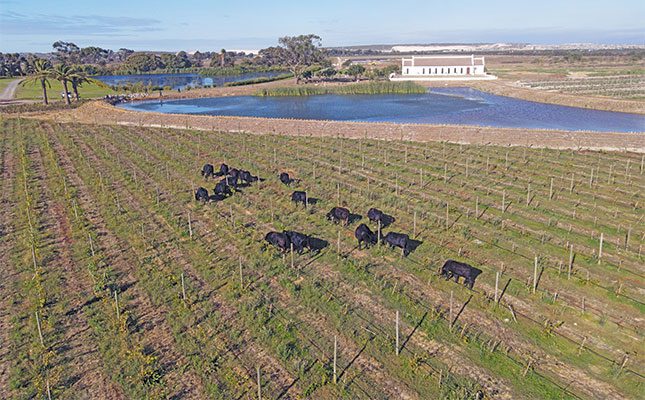
Photo: Glenneis Kriel
Dexter cattle are growing in demand in South Africa because of the excellent quality of their meat and good-quality milk with high butterfat and protein levels.
In the Western Cape, however, Dexters are now also making inroads as the preferred cattle to use in regenerative farming systems.
Bennie Diedericks, soil scientist at Resalt, spoke at a recent farmers’ day held at Klipvlei to highlight the role of Dexter cattle in regenerative farming systems, saying that Dexters were great for use on wine and fruit farms because they were hardy and had a great temperament and excellent maternal qualities, making them easy to manage.
Dexters are also small- to medium-framed, which fits well with intensive farming systems and renders them less ‘frightening’ to farmers and farmworkers who are not used to cattle.
Diedericks said that meat, like wine, should be an expression of terroir. A big bonus is that Dexter cattle produce unique meat. The meat has exceptional marbling, is naturally succulent and tender, and should fetch a premium price if marketed correctly.
“If managed properly, the Dexters are not only a regenerative tool but can help to diversify the income generation of a farm. This is important as farmers are subjected to ever increasing input costs. To be sustainable, you must be profitable,” Diedericks said.
Diedericks concluded that unlike organic farming where the focus was input based, regenerative farming’s focus was outcome based.
This means that farmers measure themselves against set goals on what they achieve in terms of soil health, crop quality, water usage, improving biodiversity, reducing chemical inputs, and so forth.
“It is a journey of continuous learning and improvement,” Diedericks said.
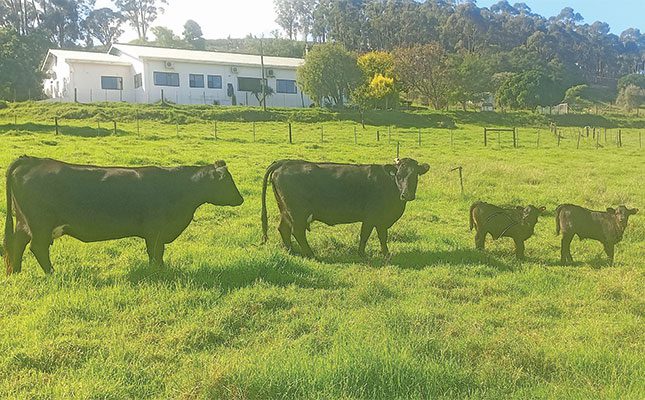
Premium-quality meat
Willie du Plessis, chairperson of the Southern Dexter Club, said Dexter cattle rarely fetched their “money’s worth” when sold through conventional market channels, such as at feedlots and livestock auctions.
To address this issue, Dexter South Africa is building a market that understands the uniqueness of the cattle’s meat and is trying to create a strong presence in the regenerative market.
Du Plessis added that farmers who participated in these market programmes would have to follow strict quality and production protocols to protect the Dexter brand.
“Meat supplied to these niche markets would have to comply with certain quality, production and environmental standards. We might have to do farm inspections to ensure compliance, but farmers would also have to hold one another accountable as mishaps can hurt everybody.”
His advice to farmers for now, especially when they only have a small number of cattle, is to focus their efforts and start ‘meat clubs’. The farmers could then sell their meat to members of the club every month and gain better prices than would be possible in the traditional markets.
“We are looking at a price of about R75/kg when sold directly to the market in comparison with R45/kg when ‘dumped’ at an abattoir,” he said.
Kobus van der Linde, president of Dexter South Africa, emphasised the importance of building a relationship with butchers.
“Many butchers are unfamiliar with Dexter meat, so walk the road with them to help them build a market for this breed. The market will grow as people become more familiar with the meat. My butcher in Bronkhorstspruit simply cannot keep up with demand, and we are hearing similar stories from farmers in other areas where the breed has been established.”
Genetics
Van der Linde said the demand for Dexter genetics was growing, with auction prices per animal up by R5 000, on average, between 2022 and 2023.
For the best production outcomes, Du Plessis advised farmers to start out with the best genetics they could afford, and to use a registered bull on their herds.
“The advantage of a registered bull is that it has known parentage that will assist you to better estimate its breeding potential and help you comply with the breed standards.”
Certified Dexter bulls are available for anything from R20 000 upwards. Although it was not ideal, Du Plessis said farmers who could not afford to buy a registered bull, or have small herds, could consider buying yearling bulls from studs.
These animals should be tested for the ‘bulldog’ gene, which may cause birth defects, and have no physical defects.
These bulls can be used in a small herd for two to three years, after which it would be best to sell them as slaughter animals. Du Plessis explained that older bulls could get “unruly” if they were not worked enough, which could easily happen in a small herd.
He said that the bulls could be sold for around R15 000, and upwards, as slaughter animals, which meant that they would at the least cover their cost.
Van der Linde warned: “Don’t buy inferior animals, as it can take years to fix the genetic impact of a poor bull on a herd.”
For biosecurity purposes, farmers should demand a veterinary certificate to prove that the animals had been tested and were free of diseases that might be of concern.
Van der Linde identified trichomoniasis as one disease that should always be tested for, since this venereal disease caused infertility and pregnancy losses early in gestation.
“Trichomoniasis has huge financial implications by resulting in cows completely missing the productive season, thereby increasing the inter-calving period. Affected bulls should be eradicated, while infected cows should be isolated for four to six months to get rid of the disease,” Van der Linde said.
New animals brought onto the farm should be kept in isolation for at least four weeks to ensure they were free from diseases and parasites before being introduced into the rest of the herd.
Artificial insemination reduces the risk of certain diseases, but Du Plessis pointed out that this method was expensive, at R700 to R1 000 per cow for synchronisation and artificial insemination, and required a lot of skill. Timing is also of the utmost importance for success.
Regenerative farming
Nicolaas Geldenhuys, who owns Klipvlei with his brother, Martin, said that he incorporated Dexter cattle into his farming system to help rejuvenate the soil.
“My father always used to keep sheep, which he allowed to graze in the vineyards, and in effect, kept weeds under control. He later stopped this practice because he was told that the sheep caused compaction in the vineyards. We have since learned that the threat of soil compaction can be negated with good management of cover crops and impact grazing.”
Geldenhuys switched to regenerative farming practices four years ago, after reading The One-Straw Revolution: An Introduction to Natural farming. The book was written in the 1970s by Japanese farmer and philosopher Masanobu Fukuoka, and advocates a deeper understanding of natural processes and the importance of farming with instead of against nature.
From then on, Geldenhuys stopped using pesticides, except for fungicides. “The change, along with the use of refuge areas and cover crops, has resulted in an explosion in the populations of beneficial insects found on our farm, from ladybirds to dragonflies,” he said.
Geldenhuys introduced Dexter cattle on the farm last season to graze the cover crops planted between vineyards and olive trees. He explained that the grazing of the cover crops resulted in the cover crops becoming bulkier and denser.
“We have very little water, so I try to produce as much plant material in between the planting rows, which serves as mulch in summer to reduce evaporation and buffer the soil against extreme temperatures.”
The cattle did a sterling job in the vineyards, but he admitted that using them in the orchards was a mistake, as they ended up eating the leaves of the trees, especially in the young orchards.
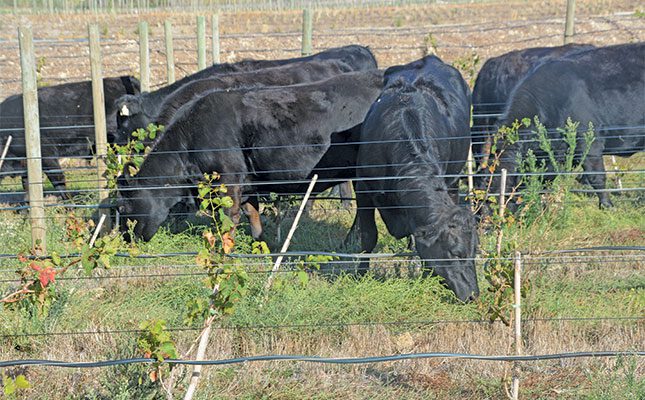
“We have to rethink the management of an animal factor in the olive orchards. The use of electric wires might be a solution to the problem.”
Wilhelm Joubert, viticulturist at Hartenberg, had been using regenerative farming practices at the estate for many years, but cattle were introduced to the vineyards four years ago.
The practices, according to him, had led to their water usage being halved and the farm saving roughly R40 000 annually, in total, in fertiliser costs. They are also using 64% less diesel thanks to the reduction in the application of fertilisers and herbicides.
He said that many people sang the praises of animals in helping to improve soil structure and soil biology in regenerative farming systems, but warned that animals were merely part of a bigger package of tools that had to be managed properly to get the desired results.
“Many of our fathers or grandfathers also had an animal factor on their farms, but these animals were used for weed control, not to regenerate the soil. Regenerative farming challenges us to think differently about cover crops and weed management in our orchards and vineyards,” he said.
For more information, email Willie du Plessis at [email protected], Kobus van der Linde at [email protected], or Bennie Diedericks at [email protected].


